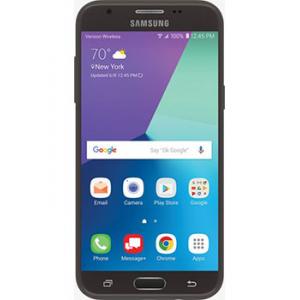Flash firmware on Samsung Galaxy J3 Eclipse
Mobiles >> Samsung >> Samsung Galaxy J3 Eclipse| Specifications | Reviews | Secret codes |
| Unlock phone | Root phone | Bypass FRP |
| Backup | Flash Firmware | Screenshot |
| Hard Reset |
How to flash Samsung Galaxy J3 Eclipse?
Why reinstall the firmware?
Errors start to appear in the operating system.
Some installed applications stop opening.
Many programs from the Play Market do not start.
The phone shuts down and restarts for no apparent reason.
The phone started to work slowly.
The OS does not match the system requirements of the smartphone.
Where can I find the firmware?
On the phone manufacturer's website.
On specialized services where users post custom or official OS.
What should be done before installing the firmware?
Back up your contacts and user data and transfer it to another medium.
Insert your SD card into your phone. An SD card is needed to write firmware to it.
Find information about your smartphone model.
Fully charge your phone. If the battery runs out during boot, the device will no longer turn on.
Find and download the archive with Firmware.
Installing TWRP Recovery
Download the Official TWRP App to your phone from the Play Market. And install this app.
When you start the application for the first time, you must agree to install the firmware, as well as agree to grant the application Superuser rights and click the 'OK' button.
Going to the next screen, select the item 'TWRP FLASH' and provide the application with root-rights.

On the main screen of the application, select 'Select Device', and find your phone model.
After selecting a device, the program redirects the user to a web page to download the corresponding image file of the modified recovery environment. Download the suggested *.img file.
When the file is loaded, you need to return to the main screen of the Official TWRP App and press the 'Select a file to flash' button. Select the file downloaded in the previous step.
After adding the image file to the program, click the 'FLASH TO RECOVERY' button and confirm your choice, click 'OK'.
When the message 'Flash Completed Succsessfuly!' appears. Click 'OK'. The TWRP installation procedure is now complete.
Copy the required files to the memory card. Using a PC or laptop card reader.
Insert a memory card into the phone.
To reboot into recovery, you need to use a special item in the Official TWRP App menu, accessible by pressing the button with three stripes in the upper left corner of the main screen of the application. We open the menu, select the 'Reboot' item, and then click on the 'REBOOT RECOVERY' button. The phone will reboot into the recovery environment automatically.
Firmware via TWRP

Before flashing, you need to delete all user data from the phone, this will avoid errors in the software, as well as other problems. Press 'WIPE' on the home screen.
Now you can start flashing. Click the 'Install' button.

The file selection screen appears. At the very top there is a 'Storage' button for selecting an SD card.
Select the storage to which the files were copied.

Find the file we need and click on it. A screen opens with a warning about possible negative consequences, as well as the item 'Zip signature verification'. This item should be checked by placing a cross in the check-box, which will avoid using damaged files when writing to the phone's memory sections.
The procedure for flashing the phone will begin, this is accompanied by the appearance of inscriptions in the log field and the movement of the progress bar.
The completion of the firmware installation procedure is indicated by the inscription 'Successful'.
Summary: Brand & Model: Samsung Galaxy J3 Eclipse; Product Release Date: 09 July, 2017; Fingerprint Sensor: No; Waterproof: No; Display Type: IPS, TFT capacitive touchscreen; Display Size: 5.0 inches HD; Resolution: 1280 x 720 Pixels, 24 bit color depth; Multitouch Input: Yes; Display Colors: 16M Colors; Pixel Density (In PPI): ~ 293.72 PPI Pixel Per Inch; Touch Screen: Multi Touch Support; Touchscreen Technology: Capacitive Touch; Display Protection: Yes; Features: TFT, HD display~ 293.72 PPICapacitive Multi-touch2.5D curved glass screen; Secondary Display: No; Screen to Body Ratio: 69.73%; Camera Type: Dual Camera Set UP (One Front One Back); Rear Camera: 5 Megapixels; Image D ...
Comments, questions and answers on the flash firmware Samsung Galaxy J3 Eclipse
Ask a question about Samsung Galaxy J3 Eclipse




